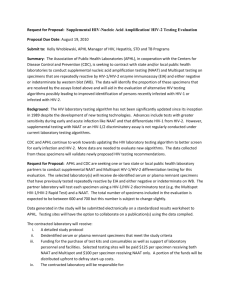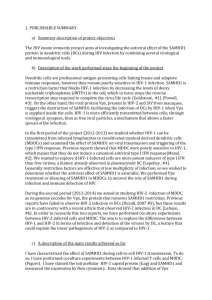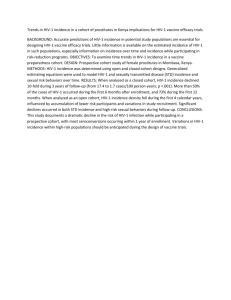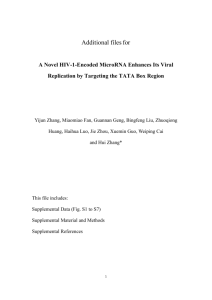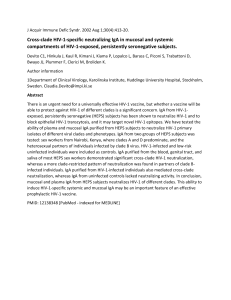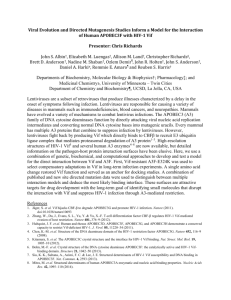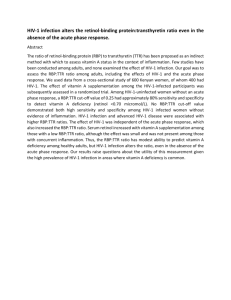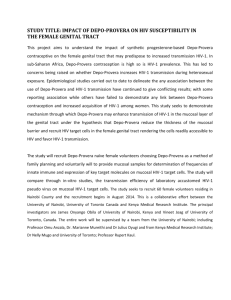File
advertisement
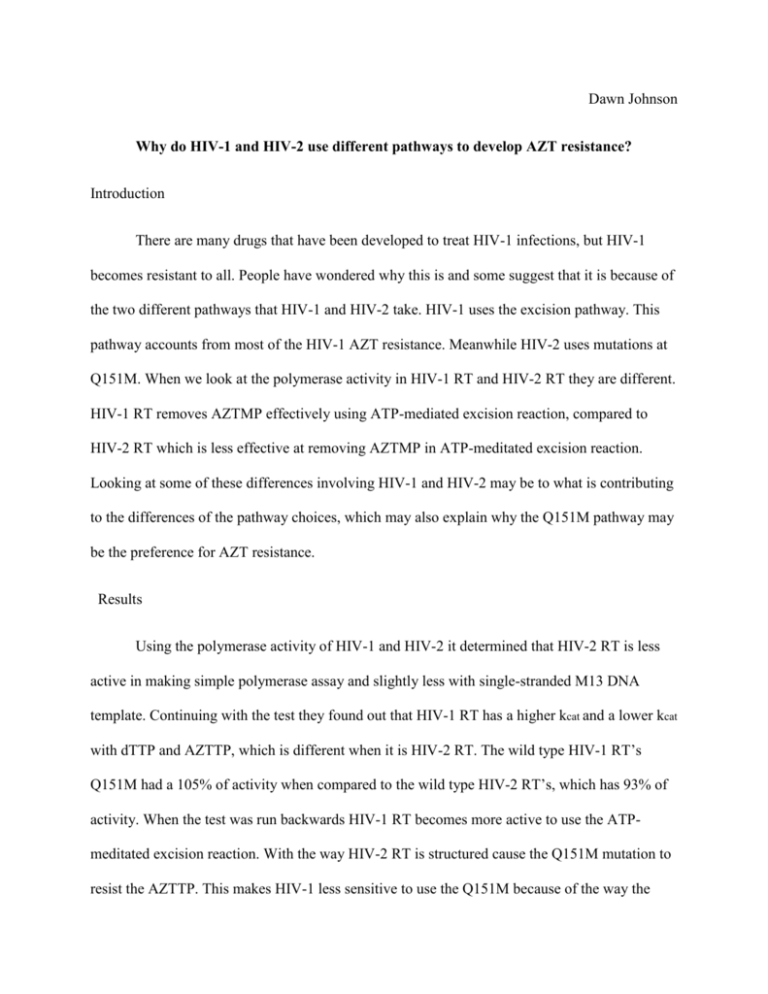
Dawn Johnson Why do HIV-1 and HIV-2 use different pathways to develop AZT resistance? Introduction There are many drugs that have been developed to treat HIV-1 infections, but HIV-1 becomes resistant to all. People have wondered why this is and some suggest that it is because of the two different pathways that HIV-1 and HIV-2 take. HIV-1 uses the excision pathway. This pathway accounts from most of the HIV-1 AZT resistance. Meanwhile HIV-2 uses mutations at Q151M. When we look at the polymerase activity in HIV-1 RT and HIV-2 RT they are different. HIV-1 RT removes AZTMP effectively using ATP-mediated excision reaction, compared to HIV-2 RT which is less effective at removing AZTMP in ATP-meditated excision reaction. Looking at some of these differences involving HIV-1 and HIV-2 may be to what is contributing to the differences of the pathway choices, which may also explain why the Q151M pathway may be the preference for AZT resistance. Results Using the polymerase activity of HIV-1 and HIV-2 it determined that HIV-2 RT is less active in making simple polymerase assay and slightly less with single-stranded M13 DNA template. Continuing with the test they found out that HIV-1 RT has a higher kcat and a lower kcat with dTTP and AZTTP, which is different when it is HIV-2 RT. The wild type HIV-1 RT’s Q151M had a 105% of activity when compared to the wild type HIV-2 RT’s, which has 93% of activity. When the test was run backwards HIV-1 RT becomes more active to use the ATPmeditated excision reaction. With the way HIV-2 RT is structured cause the Q151M mutation to resist the AZTTP. This makes HIV-1 less sensitive to use the Q151M because of the way the strands are structured. In the end they use different pathways because HIV-1 and HIV-2 have a different structure than each other. This causes them to take and resist the drugs that come into contact with these viruses. Discussion There are many differences in HIV-1 and HIV-2. The first is the difference in structure. This causes both HIV to choose different pathways. The second is HIV-1 is more resistant to the drugs because it uses the excision pathway, while HIV-2 uses the Q151M mutations. HIV-2 also requires two nucleotide changes compared to HIV-1. They both can tolerate intermediate mutation to get to the final Q151M mutation. Due to the two nucleotide changes HIV-2 is more resistant to AZTTP than wild HIV-1 or HIV-1 variant. With the way HIV-2 has less AZTTP which causes the ATP binding site to be less developed. With these observations they reinforce the nature of evolutionary events which leads to drug resistance in HIV-1 and HIV-2. Materials and Methods Both HIV’s where soaked in an E. coli strain. After that HIV-1 RT was exposed to p66 forms and HIV-2 RT was exposed to p68 forms. They were then dipped into E. coli again and purified by metal chelate chromatography. They used three types of methods. The first one is polymerase assays. Polymerase assays help determine the polymerization by AZTTP which was done. The second method is processivity assay. Processivity assay prevents RT from rebinding to the primer. The third method is pyrophosphorolysis. Pyrophosphorolysis determines the total amount of T/P and the amount of the product using a phosphorimager. The last method is single dNTP incorporation kinetics. This lines the best fit which is determined by a linear regression. This also determines the Vmax and Km of the plot. Works Cited Boyer, P. L., Sarafianos, S. G., Clark, P. K., Arnold, E., & Hughes, S. H. (2006, Febuary). Why Do HIV-1 and HIV-2 Use Different Pathways to Develop AZT Resistance? Retrieved January 28, 2014, from plos pathogens: www.plospathogens.org
